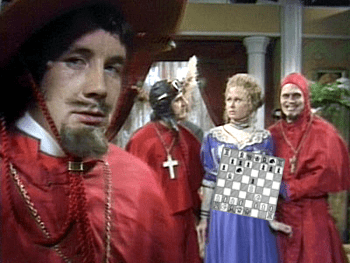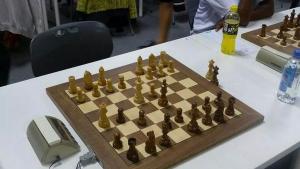
The Great Saint Petersburg Tournament of 1914, Part One: Everyone Expects the Spanish Inquisition
One hundred years ago the chess world witnessed one of the greatest chess tournaments of all time, Saint Petersburg 1914. Its storylines were numerous and compelling: Capablanca's early domination, Alekhine's first major international success, Rubinstein's first major international failure, the last huzzahs of the 72 year old Blackburne, Tarrasch's famous two-bishop sacrifice against Nimzowitch, and, most memorably of all, Lasker's incredible comeback and victory over the seemingly invincible Cuban Wunderkind.
None of this, however, is what I wish to write an article about. Instead, I shall examine this event from a theoretical perspective. Wait, no, seriously, don't run away, this is actually interesting. Saint Petersburg was a veritable supernova of new opening ideas: entirely new branches of of the Ruy Lopez were created and refined, the first modern treatment of Nimzo-Indian (first by Alekhine and only then by Nimzowitch in the following round) occurs, seeds of the McClutcheon French and Modern Scandinavian are planted (again by Alekhine), Nimzowitch concocts the Caro-Kann Bronstein-Larsen Variation, and even a proto-Benko's Gambit makes an appearance (courtesy of Capablanca).
Part one of this three-part series will examine the most important opening at Saint Petersburg by an overwhelming margin, the Ruy Lopez. By 1914 there was clearly a sea-change taking place in how to defend against the “Spanish Torture”, with the stodgy Steinitz variation in decline and both the "Open" and "Closed" defenses emerging from their infancy. In the first round, however, a completely new approach serendipitously materialized when Capablanca forgot some theory, shed a pawn, and then improvised his way to victory in “classic” Benko Gambit style in spite of Pal Benko not being born for another fourteen years…
Capablanca's innovation here should really count as double, for not only did he score a win in this game but he might have inspired Nimzowitch to almost defeat Lasker in the very next round with a vaguely similar strategy. Anyhow, not to be outdone with the Black pieces was Janowski's classically Tarrasch-ian squeeze of, well, Tarrasch:
Also contributing to the early wackiness was Alekhine coming within an ace of losing against Blackburne's Bird's Defense:
It should be noted here that St. Petersburg had a slightly unusual format: first, a preliminary round-robin involving eleven players and then a final round-robin between the five preliminary qualifiers. This format led to the oft-repeated (and likely apocryphal) story that the Czar conferred the world's first "Grandmaster" titles upon all five finalists. Anyhow, back to the Ruy Lopez, where Black's early successes came to a crashing halt in round four, first with Lasker shutting down Rubinstein's Open Variation and then Tarrasch slow-cooking Blackburne's Bird:
Moving along to round six, we have Capablanca winning with an "Alekhine's gun" formation of rooks... against Alekhine(!):
Round eight proved a shocker when Lasker blundered against Bernstein and Capa was for once unable to win a pawn-up endgame (albeit with opposite colored bishops):
Round nine was, OK, wait a sec - this is probably enough for one article - I mean, who do I think I am, Jeremy Silman? Anyhow, I'll give those still reading this a break and continue with the rest of the Ruys in my next installment.
Until then,
- GargleBlaster, who is considering changing his handle after recently realizing how many people have yet to read any Douglas Adams novels



